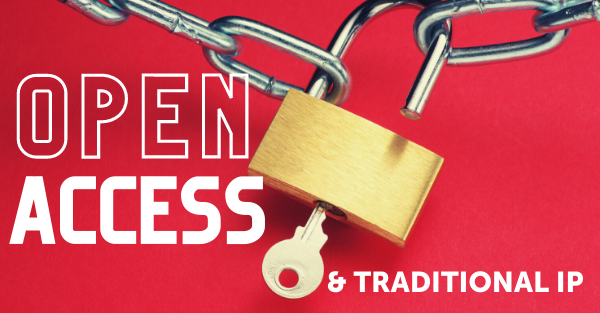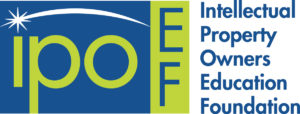By: The Michelson Institute for Intellectual Property
Executive Editor: Manny Schecter, Chief Patent Counsel, IBM. Corp. and President, Intellectual Property Owners Education Foundation
Why would one choose protecting intellectual property (IP) that one could potentially profit from rather than making it freely available? Are there types of IP that should be more publicly accessible? These are complex questions continuing to be explored and debated as our innovation economy and information sharing capacity rapidly evolves.
Traditional IP Rights
Traditional intellectual property refers to rights granted for creations of the mind, such as inventions and artistic works. These rights are supported by a legal framework which gives the owner a limited monopoly over a particular creation for a limited time, and are most commonly found in the form of patents, copyrights, trademarks and trade secrets. IP is found nearly everywhere, and is essential for economic growth including in industries such as entertainment, publishing, pharmaceuticals, consumer electronics and apparel, to name a few.
Patents The rationale for parties seeking legal protection for IP is usually commercial benefit. Patents provide a framework for sharing a protected work without foregoing commercial benefits, such as product sales and licensing royalties. For example, an individual inventor may patent a medical device, and then sell that innovation to a large corporation. The corporation often can mass produce the device at a lower cost, which in turn means a lower cost to the consumer. It is a ‘win-win-win’ for the patent owner, who profits from the invention, the corporation who sells the device to the consumer, and the consumer who is able to purchase the device at a lower cost.
Copyrights Creative individuals who seek to protect their individual works, such as songs, literary works, movies, and computer software, often benefit from IP protection. A majority of these works are presented to the public with the hopes of commercial benefit, and without copyright protection, the product could be diluted, copied and misused without compensation to the original creator.
Trademarks Businesses that use a particular word, symbol or design to identify their goods also benefit from IP protection. In the movie “Coming to America,” there is a hamburger chain called “McDowell’s,” which is strikingly similar to McDonald’s. The joke is that it has a similar logo, and similar products such as the “Big Mick” burger and milkshakes. In the real world, the United States Patent and Trademark Office (USPTO) would likely have rejected a “McDowell’s” trademark due to its likelihood of confusion with McDonald’s. A business that has created a brand and wants to protect it from “copycats” like this benefits from trademark protection, as do consumers otherwise hurt by confusion in the marketplace.
Open Source & Open Access Initiatives
Open source and open access initiatives provide public access to various types of works.
Open access usually refers to the distribution of research or educational materials online, at no cost to the user. Owners of these materials usually retain the copyright, and control the distribution of the works. An example of open access is the Budapest Open Access Initiative, an international effort to make research articles in all academic fields freely available on the internet. Another example is the Creative Commons, a nonprofit that provides licenses for a tremendous amount of creative, usually copyrighted, works. Central to its mission is assisting people and organizations in “overcoming legal obstacles to the sharing of knowledge and creativity to address the world’s challenges.”
Open source often refers to software available free of charge, but also describes a larger conceptual movement. The Open Source Initiative promotes the sharing of source code, and provides guidance on its distribution. Its principles include requiring that a license “must not discriminate against any person or group of persons,” as well as allow distribution of the source code. These principles are designed to both encourage creativity, as well as provide access to code to people who may not normally be able to afford it.
So why would a creator choose to grant a free license to his or her creative works? For one, creativity often generates more creativity, and those who choose to present their works for free may do so with the thought that it may encourage new ideas, products and solutions to larger societal challenges. In addition, allowing free access levels the playing field a bit so that entrepreneurs and individuals can better compete with big corporations who have greater resources.
Of course, creators may also want to profit from their works. A singer/songwriter who copyrights a piece of music, for example, isn’t likely to release songs for free. They would generally monetize their copyright through means such as live performances of their copyrighted works, publishing rights, record sales and streaming. This is an area where traditional IP rights continue to be the norm, though it’s an increasingly complex landscape, and policies like the Music Modernization Act of 2018 aiming to streamline and update copyright law for the digital era.
Striking a Balance
The balance between traditional IP rights and open source initiatives can be challenging. Creators may want to profit from their IP while also considering the implications for the greater good, and how a particular creation can benefit society as a whole.
One area where this convergence can be seen is the Open COVID Pledge. The purpose of the Pledge is to encourage “organizations around the world to make their patents and copyrights freely available in the fight against the COVID-19 pandemic.” Creative Commons is currently managing the Open COVID Pledge, and some of the innovations that companies have pledged include touchless password authentication, access to healthcare data and 3D-printed respirators. There are three types of licenses that a creator can grant, including an “open COVID license” that expires after a specific time period.
There are benefits to participating in the Pledge – winning the battle against the devastating COVID-19 virus will benefit humanity on a global level and requires global participation and collaboration. In addition, Pledge companies receive public recognition for their participation, generating goodwill that may result in commercial benefits elsewhere. However, taking the pledge could result in potential restrictions on licensing of IP once the pandemic is over. There are compliance issues that must be addressed and considered prior to taking the Pledge. Also, how will derivative works be addressed? While many companies have taken the Pledge and provided access to various patents and copyrights, these considerations have prevented some key industries, including medical device companies and pharmaceuticals from fully embracing the principles of the Pledge.
With a knowledge economy that’s been ushered in over the last 60 years largely due to the incentives of traditional IP rights, the question of how to strike a balance with the extraordinary benefits of open access principals will be a challenge, an opportunity, and perhaps lead to a new innovation in its own right. In the words of Stan Muller from CrashCourse, “we’re going to try to avoid the simplified intellectual property versus technology binary. The idea that we have to choose between devaluing the fruits of intellectual talent and labor, or devaluing the revolutionary information sharing capacity of our networks is wrong-headed. The more interesting and more difficult question is how we can strike a balance.”
Further Reading on “What is Open Access?”:
https://opencovidpledge.org/
https://www.budapestopenaccessinitiative.org/
https://opensource.org/history
https://creativecommons.org/
Crash Course Intellectual Property mini-series
Download the Free Infographic Below
_________
The Michelson Institute for Intellectual Property, an initiative of the Michelson 20MM Foundation, provides access to empowering IP education for budding inventors and entrepreneurs. Michelson 20MM was founded thanks to the generous support of renowned spinal surgeon Dr. Gary K. Michelson and Alya Michelson. To learn more, visit 20mm.org.



Trackbacks/Pingbacks